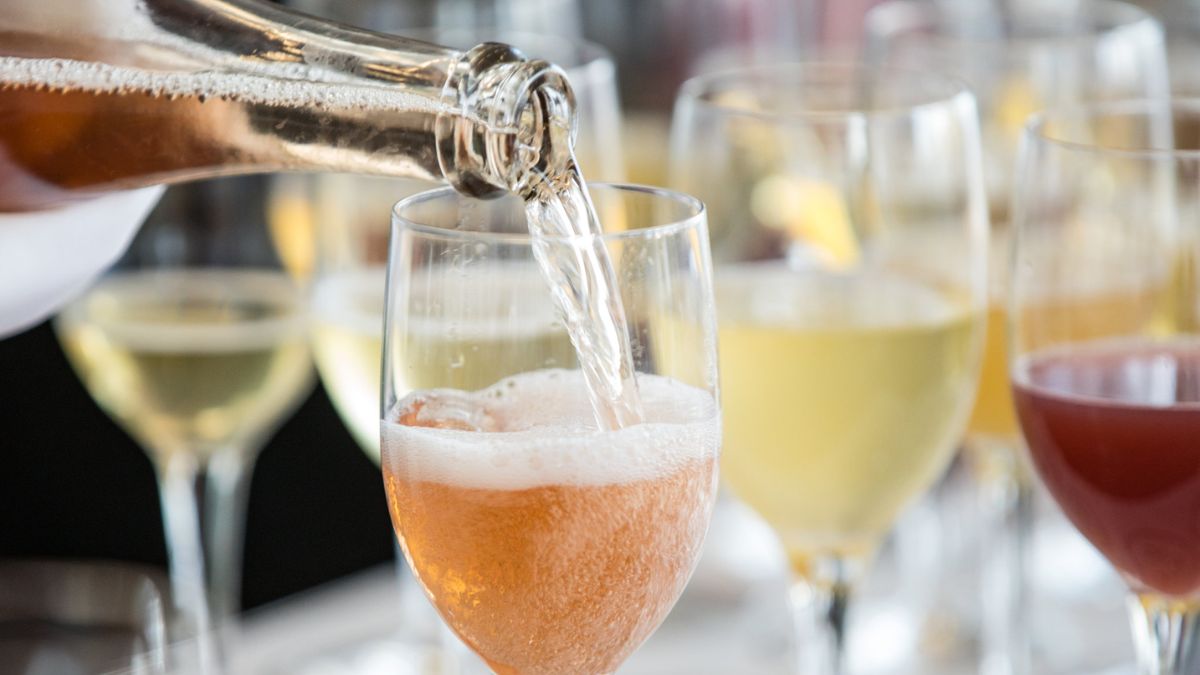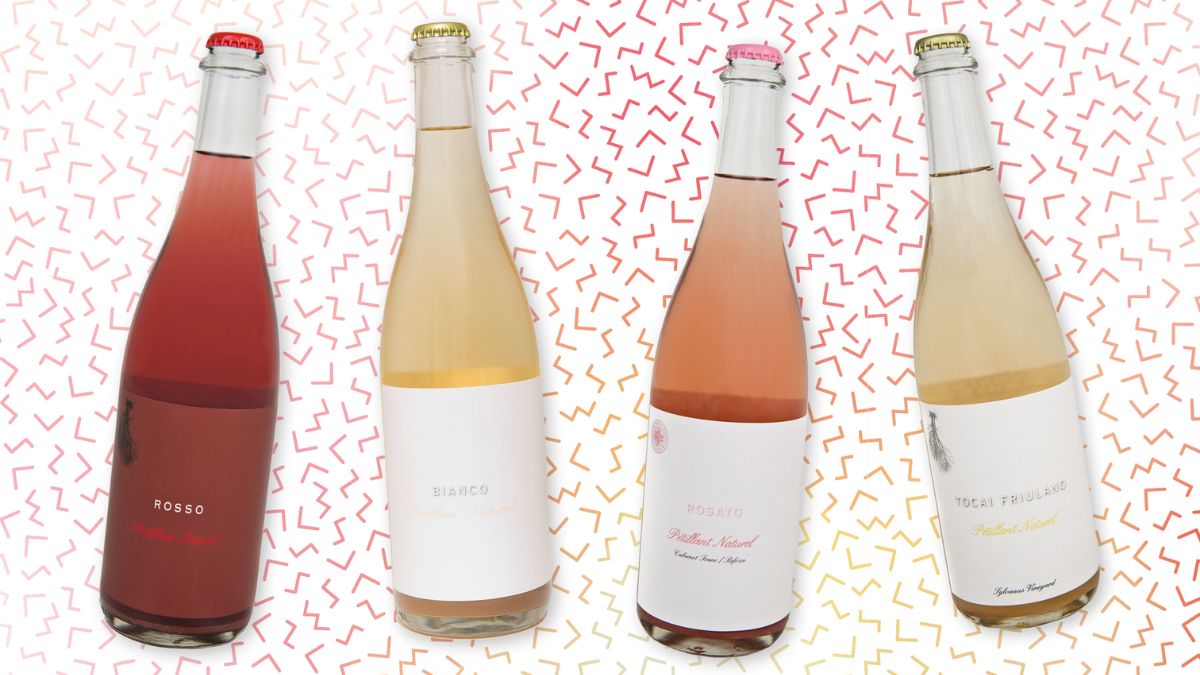According to certain sommeliers and natural wine trendsetters, champagne-style sparklers are out, and rustic, hazy pétillant natural wines are in. These mildly sweet, moderately bubbly wines are inexpensive, and their low alcohol content makes them ideal for everyday consumption. Pet Nat sparkling wines are naturally lower in alcohol and sugar than other sparkling wines since they include no added ingredients.
Petillant Naturel is far from being the new hipster kid on the block, despite its recent increase in popularity. Like many of the wines currently gaining favor, this sparkler is pre-Champagne and has been appreciated by the French for centuries. The pet-nat method is not limited to a single region. Still, it is currently popular in the Loire Valley, Limoux, and Italy, known as “col fondo” among Prosecco pet nat practitioners.
What is Petillant Naturel?
The oldest way of producing sparkling wine is called pétillant natural, and it’s also known as the traditional method or the traditional method. This winemaking technique entails bottling still-fermenting wine to trap carbon dioxide gas in the bottle and create moderate carbonation. As part of the wider trend toward natural wine, pét-nat wines (as they’re known) are growing more popular.
The term “pétillant natural” (roughly translated as “naturally sparkling”) is abbreviated as “pét-nat.”A Pet Nat (short for ‘pétillant Naturel,’ which means ‘naturally sparkling’ in French) is a wine created using the traditional method. This is the earliest method of manufacturing sparkling wine developed in the 16th century and resulted from a single, continuous fermentation.
What is the Process for Petillant Naturel?
There is only one fermentation in the traditional procedure. While the wine is fermented, it is transferred from the vat to individual bottles and sealed with a crown cap. When carbon dioxide gas, a byproduct of alcoholic fermentation, becomes trapped in the wine, bubbles form. Because the wine is not filtered and no dosage (sugar) is added, pét-nat is thought to be more “natural” than other sparkling wine styles, which need more human intervention in the winemaking process.
What are the Characteristics of a Wine Made in the Style of Petillant Naturel?
Because pét-nat wines only go through primary fermentation, their alcohol content is usually lower, about 11-12 percent. They often have a hint of sweetness from sugar that hasn’t entirely fermented.
These wines are less effervescent than Champagne technique wines due to the lack of a second fermentation. The pressure of Pétillant Naturel wines is 2.5-3 atmospheres, compared to 5-7 for Champagne, resulting in a gently bubbly sparkler.
Pétillant Naturel wines are often unfiltered, resulting in a cloudy appearance and some sediment at the bottom of the bottle. Some people prefer to shake the bottle to homogenize the liquid, while others prefer to carefully drain the clear wine off the sediment. Pét-nat wines are identified on the shelf by their crown cap, which resembles a beer bottle cap.
Why has it Become so Popular?
The quick surge in popularity of low-intervention wines has sparked a yearning (yeah, that was a pun, and you’re welcome) for wines with character and vibrancy. This growth in popularity is attributed in part to the revival of natural winemaking in countries like France and Italy, where a return to traditional winemaking practices is being promoted as a strategy to combat the wine industry’s industrialization.
Like many other new-world wine-producing countries, Australia is changing its attitude toward wine. The sector has changed dramatically in recent decades, particularly as Australians have begun to appreciate wines from the country’s colder regions. These wines are based on freshness and finesse rather than the oak and brawn for which our domestic wines have been known in the past – but that isn’t to suggest that those wines don’t have a place on the table!
Minimal involvement is required. Wines are enjoyable, expressive, and provide an economical entry point into the world of wine for those who do not wish to engage in technical jargon or snobbery. Pét-Nat is a fantastic example of this concept, resulting in a glass of wine that prioritizes enjoyment and accessibility!
What is the Difference Between Petillant Naturel and Champagne?
The conventional method, commonly known as the méthode champenoise, is used to make Champagne. The inclusion of secondary fermentation in the bottle after the first fermentation in the tank distinguishes this approach from the traditional method. Before being poured into individual bottles, the tank-fermented still base wine is given a dose of sugar and yeast, which trap carbon dioxide from the second fermentation in the wine.
Champagne ages with the dead yeast cells (lees) for months or years after fermentation in the bottle, before the yeast is extracted and the bottle is re-sealed with the iconic mushroom-shaped cork. The toasted, nutty, brioche-like flavor of Champagne’s typical pinot noir and chardonnay grapes is transformed by bottle aging with the lees. The dosage, or sugar that the winemaker adds during the wine’s secondary fermentation, determines the final sweetness level of Champagne.
Pét-nat, on the other hand, is a young wine that emphasizes fresh fruit flavors. Unlike Champagne, pét-nat is not filtered to remove yeast, and it is not authorized to be dosed. Pét-nat is less expensive than Champagne because it requires less labor, time, and pricey grapes to produce. Petillant-Naturel is the procedure of bottling a still wine while it is still fermenting in the main fermentation. In Champagne production or the “conventional way,” primary fermentation is allowed to finish before extra yeast and sugars are added to start secondary fermentation and give the wine a predetermined degree of fizz and residual sugar content.
What does Pet Nat Taste Like?
It smells like delicious tomatoes, and cherry piths and tastes like raspberries and pomegranate seeds. Pet nats have a high drinkability factor, can express exceptional balance, flavor, and texture, and the greatest specimens are well worth the money. They may even permanently alter your perception of wine. Pet Nat’s are aromatic, fizzy, juicy, mainly dry, occasionally fruity, like a pear cider, and occasionally tropical, like a Hawaiian vacation. There can be a hint of citrus tartness and herbaceous secondary flavors from skin contact, unfaltering, and those leftover yeasty floaties.
How do they Make Pet-nat?
Pét-Nat is prepared by bottling wine when it is still in the primary fermentation stage when the yeast is still converting carbohydrates to alcohol. Carbon dioxide is a natural consequence of alcoholic fermentation, and it builds pressure in a sealed container, making wine bubbly. Pétillant-Naturel (natural sparkling) is a catch-all word for virtually any sparkling wine created in the méthode ancestrale. According to Bloomberg, the wine is bottled before primary fermentation is completed, without the addition of secondary yeasts or sugars. As a result, pet nat wine has low sugar content.
Is Pet-nat the Same as Natural Wine?
As a result, natural wine is prepared from grapes that have not been sprayed with pesticides or herbicides. Natural winemakers handpick them instead of relying on robots to harvest their grapes. Pétillant-Naturel (natural sparkling) is a catch-all word for almost any sparkling wine created in the méthode ancestrale. The wine is bottled before primary fermentation is completed, without secondary yeasts or sugars. As a result, pet nat wine has low sugar content.
Pet-Nat Wines can be Unpredictable
Because the wine is bottled before the fermentation is finished, it can be a little more unpredictable. Stopping the fermentation process before it is finished can result in a volatile end product or something exceedingly delicate. The exact volatility upon removal from a refrigerated facility isn’t usually as precise as using the base wine’s initial yeast strains and residual sugar concentration. As a result, some Pet-Nats have been known to explode, and many modern winemakers now use screw caps instead of corks to avoid any mishaps. Expect no overbearing bubbles, though. Compared to its traditional technique, Franciacorta or Champagne brethren, Pet-Nat can frequently have a delightfully soft, effervescent feel on the mouth once uncorked.
How Long can you Keep Pet Nat for?
Pét-nat isn’t supposed to be kept in a cellar; it can be maintained for a year or two if properly preserved, but it’s not meant to be aged… To put it another way, pop a bottle and start drinking. Keep your pét nats in a cold, dark area away from sunshine and heat until you’re ready to drink them, just like any other wine. Of course, they should be served chilled.
What is the History of Petillant Naturel?
The area around Limoux, a town in the Pyrenees highlands of southwest France, is where the first sparkling wines were made. In 1531, the Abbey of Saint-Hilaire, according to legend, began manufacturing sparkling wine. Others were (and still are) manufactured at Gaillac, a neighboring region where the conventional method is known as méthode gaillacoise.
The Montlouis Pétillant Naturel AOC, formed in 2007 for the traditional method of sparkling wine made from Chenin blanc grapes in France’s Loire Valley, was the first to acknowledge pétillant natural by name. The Loire Valley is the epicenter of pét-current nat’s renaissance, with numerous wineries working in a low-intervention, terroir-driven manner. The region’s Pét-nat wines are often white or rosé types created from Chenin blanc or red grapes like Gamay, cabernet franc, or grille.
Pétillant Naturel is still most typically produced in France, but as consumer interest in minimally modified wines grows, winemakers worldwide are experimenting with the style. In the United States, pét-nat wines are made in California, Oregon, and Long Island, New York.
Conclusion
Pét-Nat is prepared by bottling wine when it is still in the primary fermentation stage when the yeast is still converting carbohydrates to alcohol. Carbon dioxide is a natural consequence of alcoholic fermentation, and it builds pressure in a sealed container, making wine bubbly. The yeast cell debris is frequently left inside the bottle, leaving the wine hazy and imparting a delicate creaminess to the mouthfeel. One of the reasons it’s described as a ‘natural’ sparkling is because it was the first form of carbonation to be employed, and it was found by accident, like most wonderful things.


